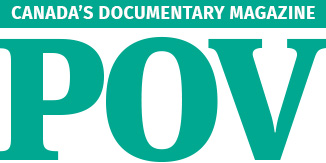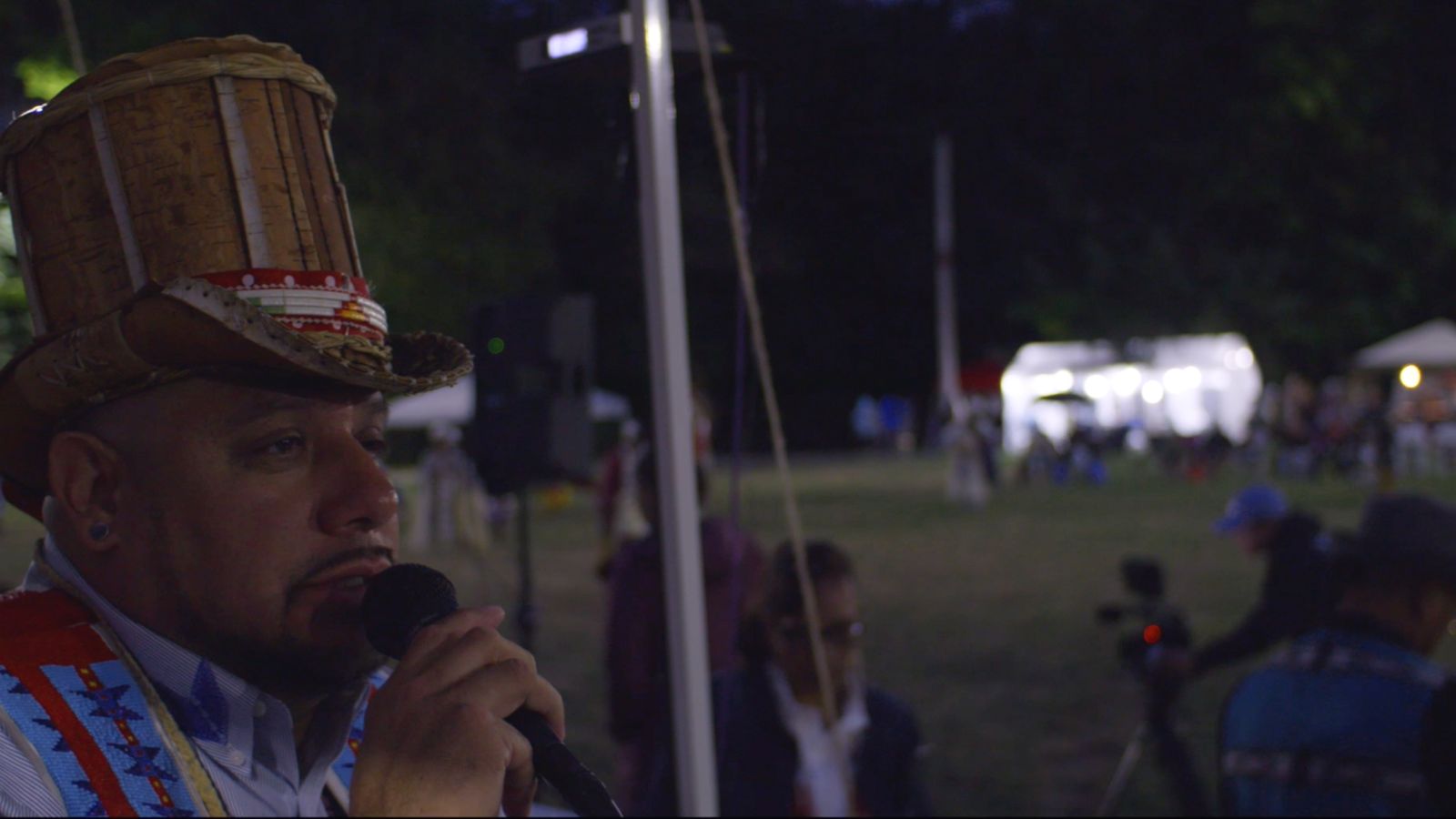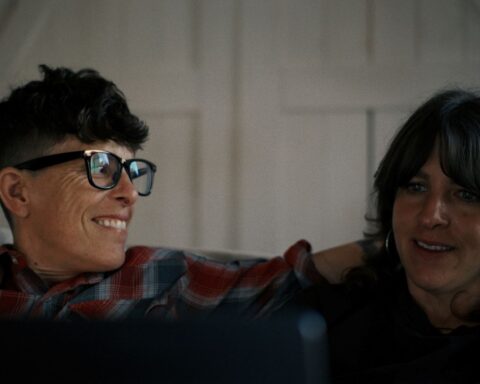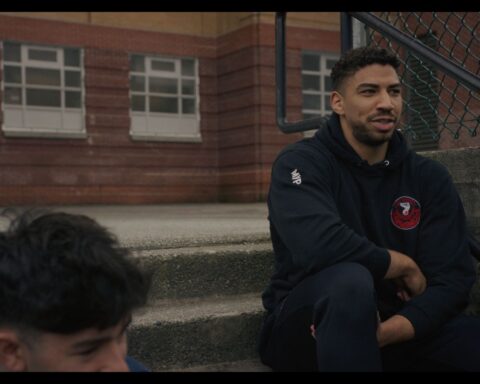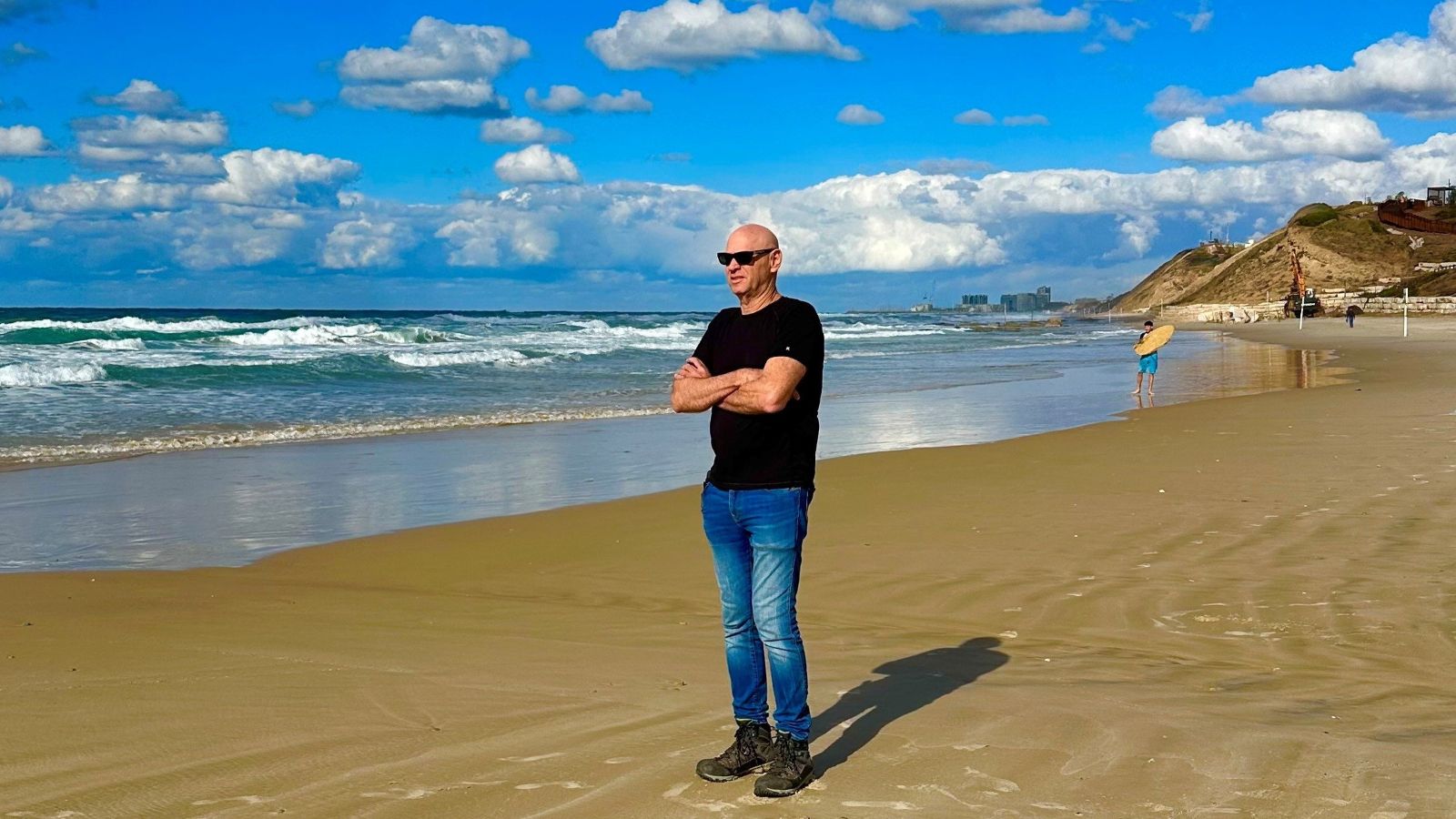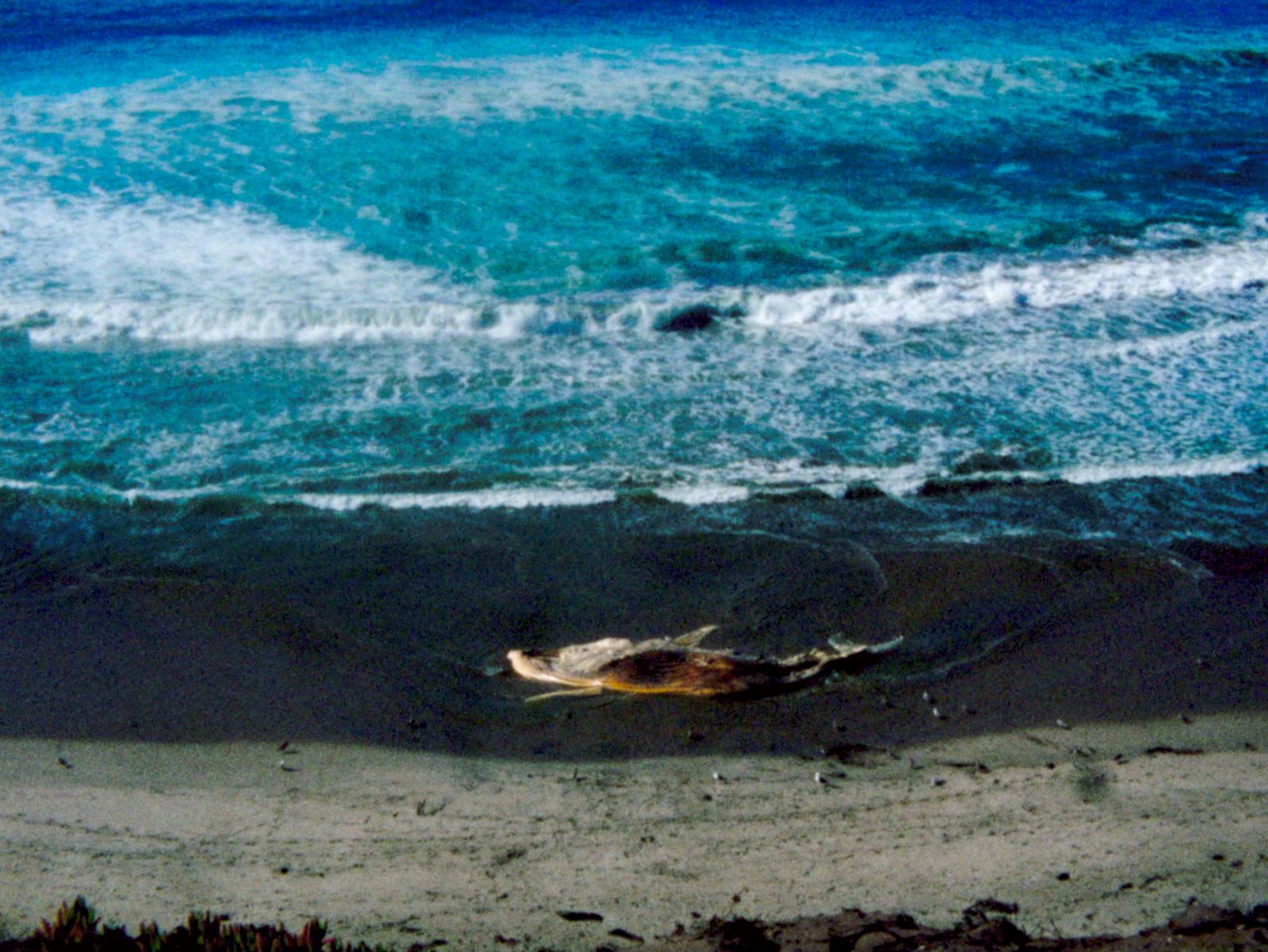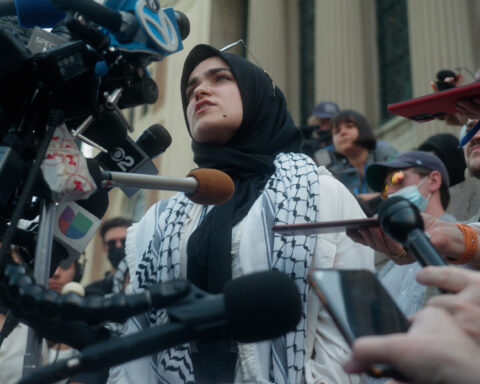Sky Hopinka’s new feature film at TIFF is beautifully made, and a complete surprise. Powwow People is a straight-ahead distillation of a colourful powwow ceremony, staged and shot by Hopinka and his small, talented crew over three days. The rituals, the dances, the singing, and the parade are brought to life vividly while the entire event is narrated by the extraordinary voice of MC Ruben Little Head, a veteran who gives just enough history and humour to keep the story flowing.
It’s a departure for Hopinka, well known for his artistic short videos and films that have won him a Guggenheim Fellowship in 2020 and the MacArthur “genius” award in 2022. Here, he eschews his stylistic tricks and goes for an uncomplicated, but beautifully wrought documentation of a celebration beloved by not just Indigenous people but those of other ethnicities and cultures.
When asked whether he realized that he was making a musical, complete with costumes, singing and dancing, Hopinka laughs, “I haven’t thought about my film as a musical! I grew up listening to musicals with my grandmother. There’s something about music that offers a way in for people who might not necessarily be familiar with a culture or a community. It can guide them towards other experiences or other places or other memories that they might bring along with them.”
Hopinka’s reasons for making the film are quite personal. “When I first started thinking about filmmaking, I knew I wanted to do something about powwows, which were so important to me growing up. The history of powwows themselves is really fascinating. They’re designed for non-Native audiences to come to the reservation to see life, to see things happening, and for us to perform in a way.
“And that tension between the audience and the spectacle and who has agency and how they’re being presented, I think is very formative for me,” he continues. “There’s something about the dancers, the drummers, the singers, and the families looking inward, but at the same time looking outward. I that thought was very cinematic. I wanted to explore it in this film.”
While all of that makes sense, Hopinka’s vérité approach to Powwow People may feel like a huge change from his avant-garde methods in previous works. Not to Hopinka. “I feel it is a continuation of the work that I’ve been doing in a way that is less in terms of the abstractions that I tend to use, and more grounded in a reality that is constructed. It is also one that is open to interpretation.”
Hopinka has been working on the film for many years, long before COVID delayed every project for quite some time. He recalls, “I curated an event at the Yale Union [a former industrial laundry building now transformed into an Indigenous art space] in Portland, Oregon in 2019. We put on a powwow there in the spring. It was designed to be a dry run, to see how it would work for a feature length film.”
It took more than four years to stage and shoot Powwow People in August 2023. Working with an old university friend Gina Bluebird, Hopinka moved the location from Oregon to Washington state. “We settled on Daybreak Star [Cultural Center] for the shoot because of its neutrality. It’s not in a reservation. It’s not tied to a specific community. We weren’t trying to bulldoze anyone. We didn’t say, ‘This is our powwow, everyone in the community has to come to this.’”
Hopinka decided on a non-interventionist approach to the project. Evoking the powwow was the film’s raison d’être. He made sure that the shoot wouldn’t interfere with the region’s other powwows, which regularly take place during summer weekends. Hopinka wanted—and needed—participation from the local First Nations’ communities and deliberately avoided creating complications.
“We had our film shoot in the middle of the week instead of the weekends because we didn’t want to compete with any of the established powwows in the region,” says Hopinka. “We wanted to run a powwow as it is. We didn’t want to run it like a film set or a film shoot. We didn’t want people to stop and do things over again.
“Powwows usually start on Thursday evening or Friday evening for one session. Then there’s a Saturday afternoon session and another in an evening session. They finish with a Sunday afternoon session. Each one is four or five hours. We basically did the same thing only on a Tuesday, Wednesday, and Thursday.”
One of the key elements in the film is the extraordinary narrative voice of Ruben Little Head. He’s a large charismatic presence when seen but his narrative skills really tie the film together. Hopinka is enthusiastic when describing his MC. “Ever since I first heard Ruben in Southern California in the mid 2000s, I have found him to be amazing. He has such a strong, warm and welcoming voice, but at the same time, he’s funny and sharp. He knows everyone and that was really nice throughout the weekend. In that 30-minute long take with all those dancers [which ends the film], he called them by name. He brought a familiarity that I was really hoping that an audience would relate to.
“You just get a sense that this is someone who is guiding you through the space. He really exemplifies the reverence and irreverence when it comes to all the parts of the powwow. Ruben knows when to take things seriously but also knowing when to have fun and when to joke around and when to tease. He holds the audience through his power, which is the job of the MC.”
Another important presence in the film is Jamie John, a Two-Spirited Indigenous dancer, who has quite an articulate voice as well as beautiful moves as a performer of the evocative fancy dance. Hopinka speaks of John with quiet respect. “We’d been talking to Jamie John for the past year about including them in the film. There is just something real about the way that they think and are able to vocalize their thought processes around participation and suspense.
“Jamie really speaks to a facet of the powwow that I find fascinating: its adaptability, the way that it changes. [The use of the fancy dance expressing Two-Spirits only began in the Sixties.] The powwow and the dances are in constant flux. That is something I’m always interested in with culture and language, the way that its adapting. It’s not stagnant,” says Hopinka.
“The Two-Spirit dancer, being non-binary, is part of the evolution,” adds the director. “It’s part of the changing ways that we understand who we are outside of the colonial constructs that were imposed on us through assimilation. Jamie John, in the last interview we had in the film, put it all so beautifully and so eloquently. They said that there are questions that we have about moving forward, as we exist with respect for the past while thinking about the future.”
Hopinka made sure that the entire powwow experience was depicted, not just the mainstage singing and dancing. Well loved by many are the regalia that the Nations wear in a parade; indeed, it is also a highlight of the three-day event. Hopinka is keen to point out the personal nature of the beautiful costumes worn during the parade.
“The regalia worn at the powwows are really important. They’re made by families or close friends. My grandma and mom beaded my outfit. They’re often handed down, from one generation to another. I have elements of my great grandfather’s beadwork on my outfit. These things are all very important and special. Whether it’s a golden eagle feather bustle or a fan, or a black and white broach, these are all things that are handmade.”
He’s also a lover of the booths that form a circle around the dancing zone, made up of people selling wares or food. “The vendors are an integral part of the powwow ecosystem. We show people selling beadwork, toys, hair clips, or earrings. My grandma was a vendor. She would go out and dance and then she would go to her vendor stand set up where she would sell her beadwork.”
A major element in the film is the depiction of the final dance of the powwow. It lasts 30 minutes in the film and was shot in one take by Hopinka. Although the dance take is a bravura element in the film, Hopinka is quick to emphasize the personal over anything technical.
“We edited the film to show some of the same people doing different things—being in the parade, dancing, maybe walking in the crowd. There’s a certain sort of repetition and familiarity that is really nice about powwows. Usually by the last dance, it’s late and the crowd is sparse. There are only the families, the dancers, the drummers, the vendors. I think it’s really beautiful in that way. I was hoping to show that intimacy in the culmination of the film and not just the 30-minute-long dance take.”
Powwow People is a unique film—a true documentary made by a widely acknowledged artist. Sky Hopinka has made a highly accessible work that wonderfully evokes a grand Indigenous ceremony, the powwow. It’s a film that will last for generations as an important archival work.

